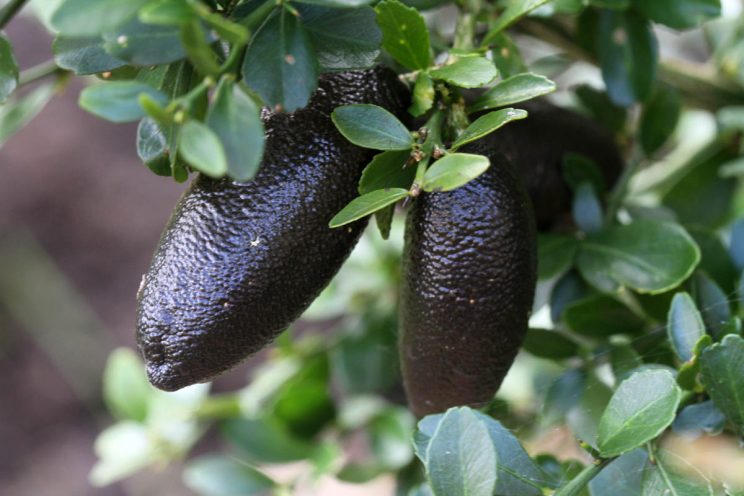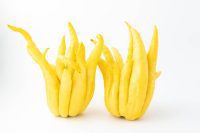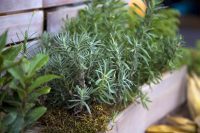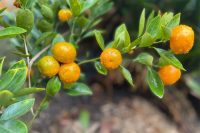What is a finger lime? Ι History Ι Modern cultivation Ι Characteristics Ι Is finger lime self-pollinating? Ι How to grow finger limes Ι Pests and diseases Ι Nutritional information Ι Uses Ι Is finger lime toxic to dogs and cats? Ι Recipes
What is a finger lime?
Also known as ‘caviar lime‘, the Australian finger lime (Citrus australasica, F. Muell) is a small thorny citrus tree or shrub, native to the subtropical rainforests of southern Queensland and northern New South Wales, Australia. The elongated ‘finger-shaped‘ fruit of Australian finger limes is highly valued for its juicy, citrusy pulp and distinctive caviar-like texture.
Finger lime fruit grows in a range of colours, from green and yellow to pink and red. This tangy and tart fruit has a variety of culinary applications, including garnishing cocktails and seafood dishes to flavouring desserts and jams. While still relatively unknown outside of Australia, finger limes are gaining popularity as a gourmet ingredient and are being cultivated for commercial sale around the world.
Related: Buddha’s hand citrus
History

Citrus species diversified during the Miocene epoch (23.03 to 5.33) when a rapid southeast Asian radiation (a relatively quick diversification and expansion of a group of organisms) occurred at the same time as monsoons weakened. A second radiation saw a migration across the Wallace line (an imaginary boundary that separates Asia and Australasia). Ancestral citrus species in Australia evolved separately from their relatives in Asia, leading to the unique characteristics found in finger limes and other native citrus. These adaptations were driven by various factors, such as climate, soil conditions, and ecological interactions with other organisms, like pollinators and seed dispersers.
Finger limes have been a valuable food source to Indigenous Australians for thousands of years and are known as ‘gulalung‘ by the Bundjalung nation of the Arakwal Australian Aboriginal people. The pearls were applied topically as an antiseptic and may accelerate wound healing. Much of the finger lime population was destroyed due to land clearing for farming by early European settlers. Isolated pockets in subtropical rainforests and private land still remain.
Modern cultivation
Judy Viola of Judy Viola Citrus Nursery trialled 90 finger lime cultivars in 1989 and chose ten varieties. Eight finger limes are registered with the Australian Cultivar Registration Authority which vary in size and shape.
- Alstonville
- Blunobia Pink Crystal
- Byron Sunrise
- Jali Red
- D1
- Rainforest Pearl
- Pink Ice
- Durham’s Emerald
Judy pioneered the successful grafting of finger limes, which are typically grafted to Citrus trifoliata for their ability to resist Phytophthora root rot. Commercial production of finger limes is mostly confined to northern NSW and southern Queensland.
Over the past decade, commercial interest in bush food has propelled finger lime into the spotlight with the fruit commanding a high market price. 50% of finger limes are exported to Europe and Asia where they are served in high-end establishments. If you are lucky enough to find finger limes for sale, prices start at 80 Australian dollars per kilogram.
Finger canble to hybridise with other citrus varieties and the CSIRO has produced three novel finger lime varieties suitable for commercial sale.
- Australian Blood Lime: Citrus australasica (finger lime) x Citrus × microcarpa (mandarin x cumquat)
- Australian Sunrise Lime: Citrus australasica var. sanguine (red finger lime) x Citrus × microcarpa (mandarin x cumquat)
- Australian Outback Lime: Also known as Australian Desert Lime, the Australian Outback Lime is a cultivar developed from a collection of native desert lime trees (Citrus glauca).
All three novel finger limes were granted Plant Breeders Rights in 2004 and licensed to four Australian nurseries.
Characteristics
The leaves are arranged alternately on the stem and have a slightly serrated edge. What is unusual is the size of the leaves, which are considerably smaller than other citrus varieties, as you can see in the image below which has a lemon leaf for comparison.
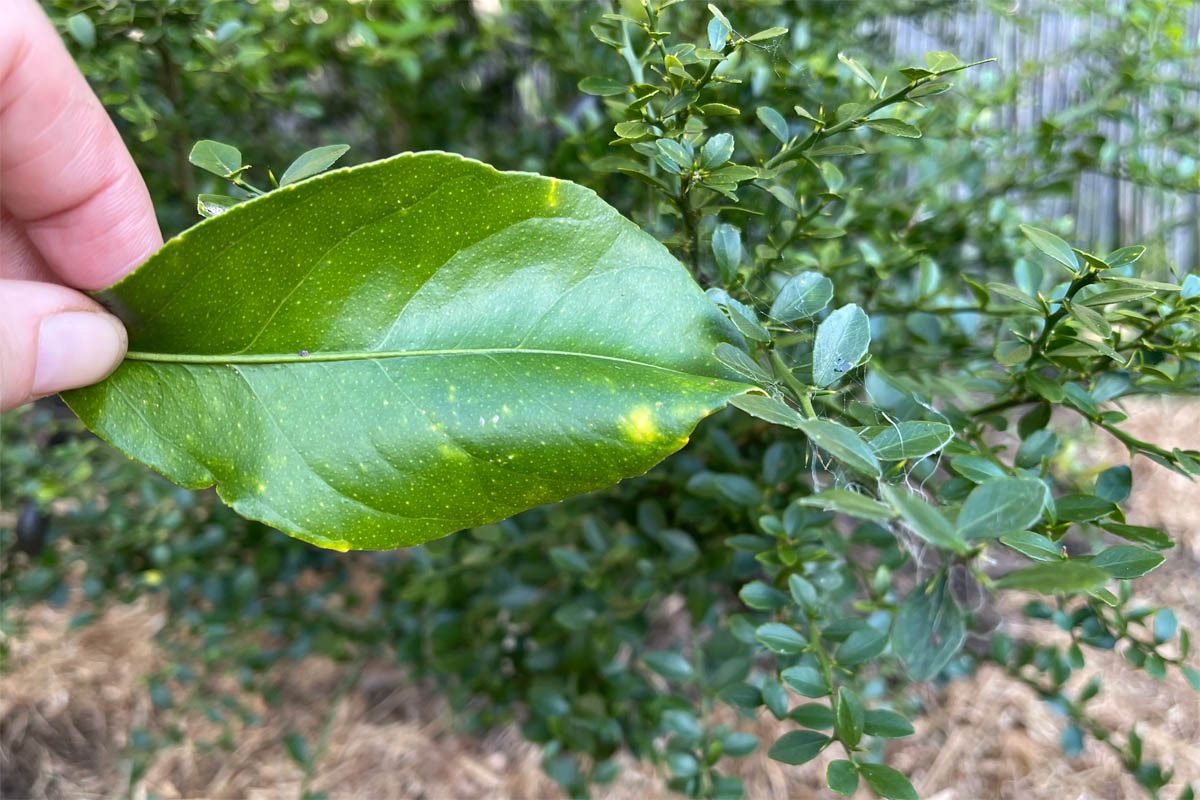
The stem of the finger lime is woody and usually has thorns or spines along its length. The thorns can be up to 1 inch (2.5 cm) long and are sharp, so care should be taken when handling the plant.
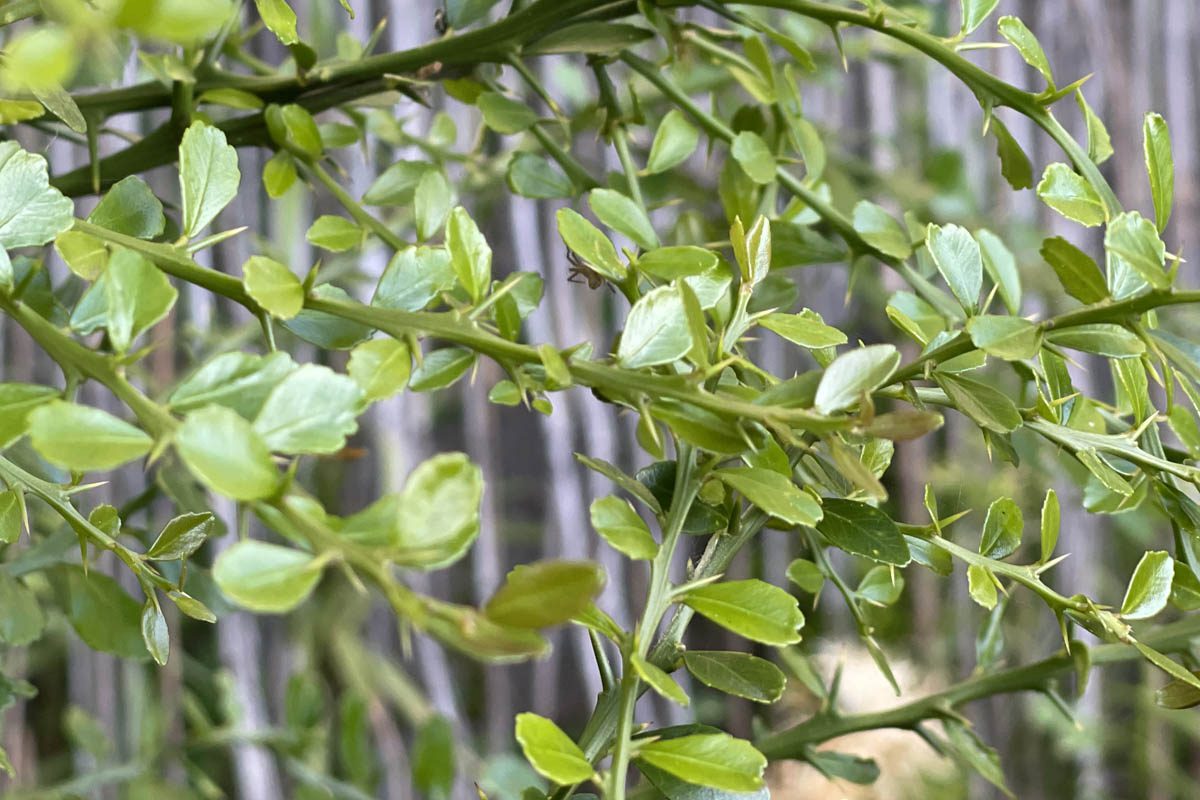
The finger-shaped fruit ranges in size from 3 to 10 cm long, with a circumference of 1-2 cm. What makes them truly unique are the small, juice-filled vesicles inside the fruit that resemble caviar or pearls. These translucent balls of flavour pop in your mouth, reminiscent of popping candy. Finger limes are available in a range of colours, including red, pink, champagne, yellow, and green. The finger lime’s pulp can add a unique pop of flavour and texture to various dishes. With over 65 wild varieties identified, these little fruits offer endless possibilities for culinary exploration.
The image below shows how the colour of the pulp changes as the fruit matures. Both of these finger limes came from the same tree, but the images were taken 13 days apart.
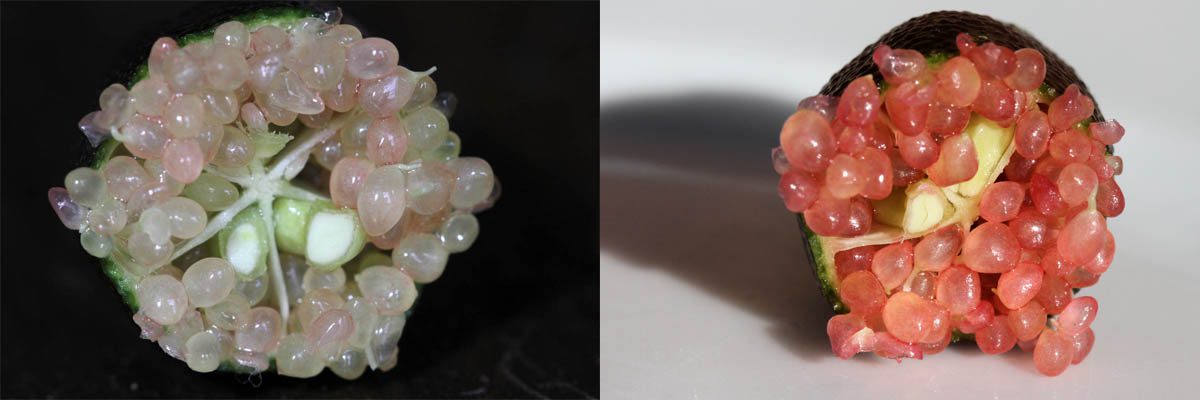
The flavour of finger limes is described as tart, tangy and citrus. I would describe it as a similar flavour to lime, with the addition of the characteristic crunch when the vesicles burst in your mouth.
Finger limes have a delicate floral, citrusy, and slightly sweet aroma that is not as strong as other citrus varieties, but it can still be detected when the fruit is sliced open or its zest is grated. I find the leaves less citrusy when bruised or torn compared to other citrus varieties.
Is finger lime self-pollinating?
Finger limes are self-pollinating, which means a single tree may be able to produce fruit without cross-pollination from another tree. The flowers of finger limes contain both a stamen (male reproductive organs) and a pistil (female reproductive organs). Native bees and honey bees are the most common insects that transfer pollen from the stamen to the pistil.
Hand pollinating:
Some growers hand pollinate to increase yield. To hand pollinate your finger lime, use an art or small make-up brush and wipe around the inside of the flower. The pollen will appear as a fine, yellow powder. Spread the pollen around from flower to flower.
How to grow finger limes
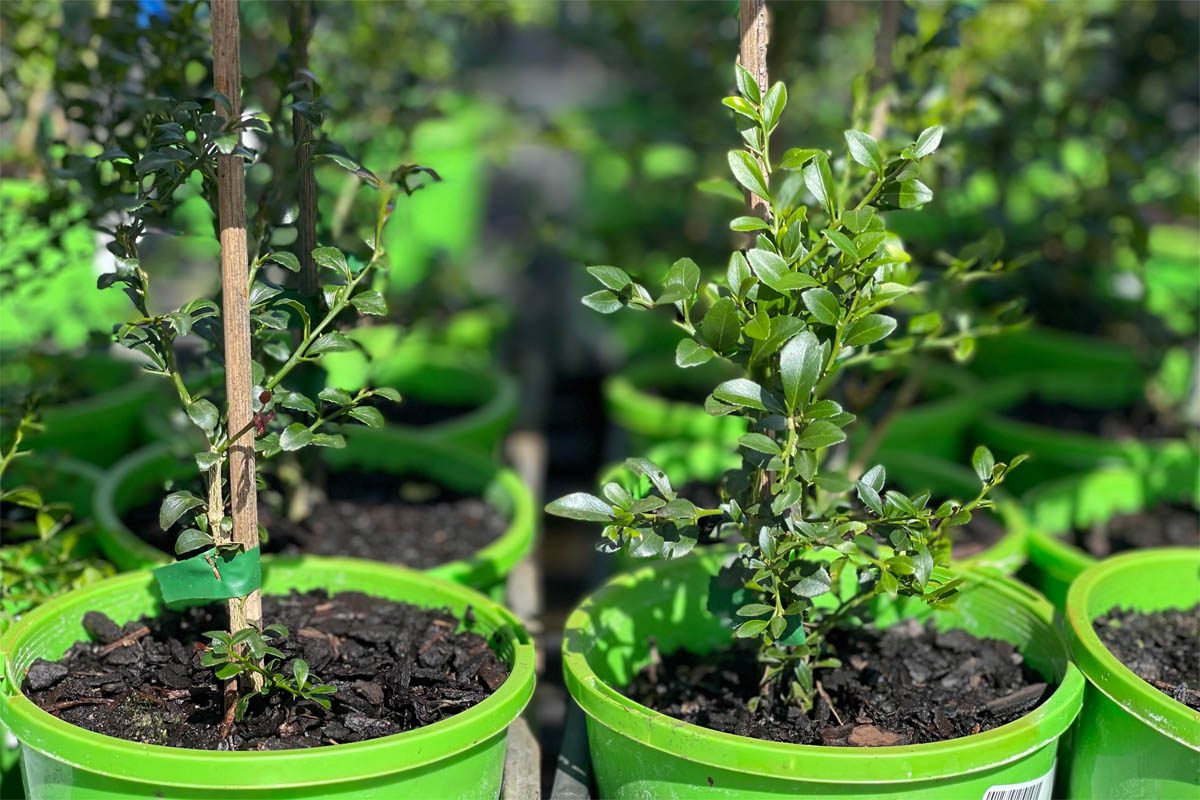
I find finger limes are a little more tricky than other citrus varieties. Here in Australia, north facing is the sunniest aspect and where all of my other citrus grow.
My finger limes grow in a north-facing position, but at the back of the house. Due to the pitch of the roof, the sun hits their garden bed mid-morning. They still receive several hours of sun, but not as much as the plants at the front of the house which receive sun all day. If you are in the northern hemisphere, reverse this as south-facing is your sunny aspect.
Care requirements for finger limes |
| Light: Full sun to part shade (see above). In hot and dry climates, finger limes will benefit from some shade during the hottest part of the day. |
| Watering: The natural habitat of finger lime is subtropical, with higher than average rainfall. Finger limes are not as drought-tolerant as other citrus species. Water twice a week or more during hot spells and mulch well, which will help to retain water in the soil. Do not add mulch directly around the trunk of the plant, which can increase the risk of collar rot (Phytophthora citrophthora). |
| Time to fruit: 2-3 years depending on the variety. |
| Fruit maturation/harvest: Autumn to winter (June-July in Australia). |
| Soil type: Finger limes require well-drained soil that is rich in organic matter and nutrients. |
| Soil pH: Neutral (6.6-7.3pH) |
| Fertiliser: Every 3 months during the growing season. |
| Time to harvest: Up to three years to produce fruit, and six years before they can produce a substantial crop (up to 20 kg). Removing fruit from juvenile trees is beneficial so they can put all their energy into growth. My finger lime produced two mature finger limes in its first year and doubled in height, it is now in its third year at home and currently has approximately ten fruit on it. |
Where to buy finger limes:
Finger lime fruit is sometimes available at specialist greengrocers but is not generally available in supermarkets. Compared to other citrus varieties (lemons, limes, oranges etc.), finger lime is relatively expensive as they are a specialty product and are not grown commercially on a large scale. The fruit is delicate and requires careful handling during harvesting. In addition, finger limes are highly valued in high-end restaurants, which further drives up the price.
Finger lime trees are sometimes available at Bunnings (for Australian readers) as well as Daleys Fruit so you can grow your own supply. Daley Fruit always sells relatively large/mature trees compared to other online fruit tree retailers. Check with your local garden centre, they may be able to er in finger lime trees. Our local nursery currently has finger limes in stock, and they are becoming more widely available for the home grower.
Finger limes grow well in the ground in pots, but bear in mind, you won’t get as much fruit from a finger lime in a pot due to restricted growth. When growing in pots, choose one that is at least 40 – 50 cm (15 – 19 inches) wide.
When does finger lime fruit?
Small pink buds develop in spring and open up to reveal a white flower from which finger limes emerge. Insects increase pollination rates, so it is good practice to grow flowers insect-attracting flowers close to your finger limes. The harvest period varies depending on the variety planted but typically ranges from May to July (late autumn, winter) in Australia. It takes approximately five months for the fruit to reach maturity after the onset of flowering. You will know when they are ready if they come away from the tree with little resistance. Harvesting can be tricky due to the thorny branches, a pair of BBQ tongues or protective gloves are recommended.
The image below is my homegrown setup. I currently have five finger limes (one is out of view), that I have growing in a row in a south-facing position. The largest finger lime (second from the left) is now two years old, when it arrived it was around 30 cm high, and it is now approximately 120 cm (47 inches). This year, it has produced 10-15 finger limes, the other trees haven’t produced anything, but I expect they will do so in a year or two. Growing fruit is a test of patience.
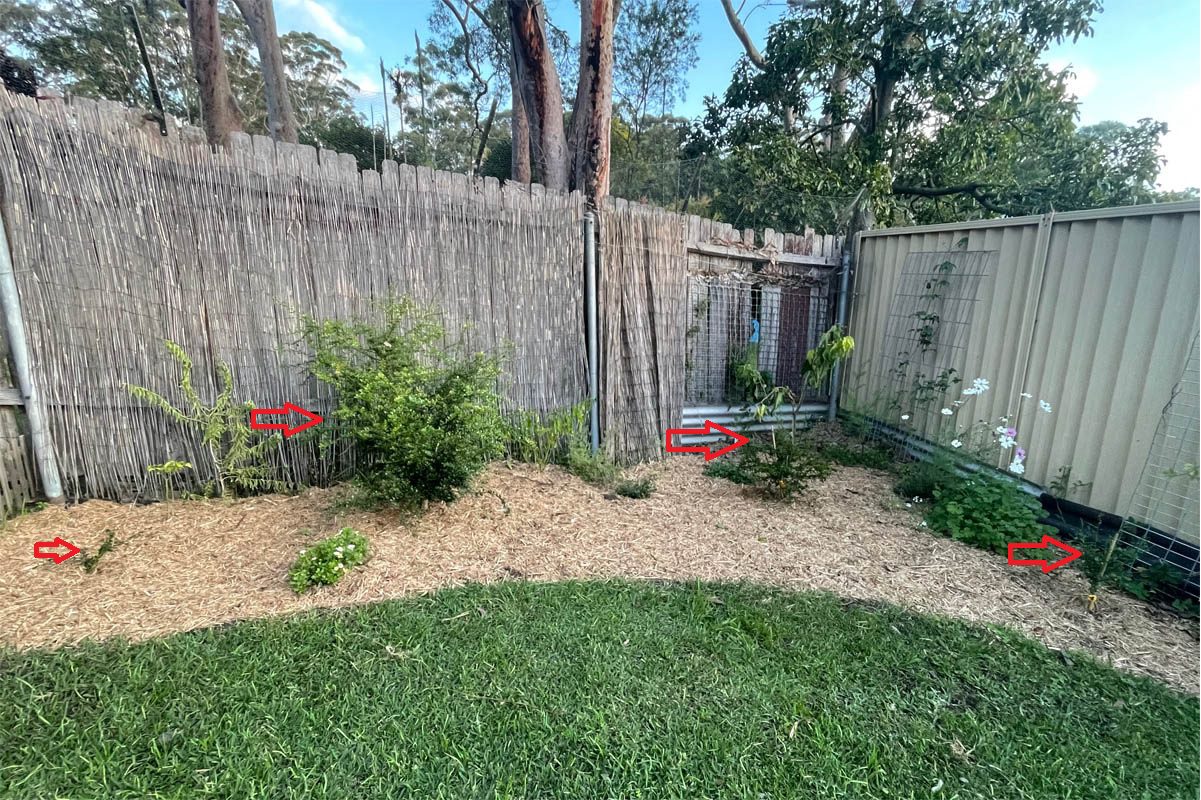
Can you grow finger lime from seed?
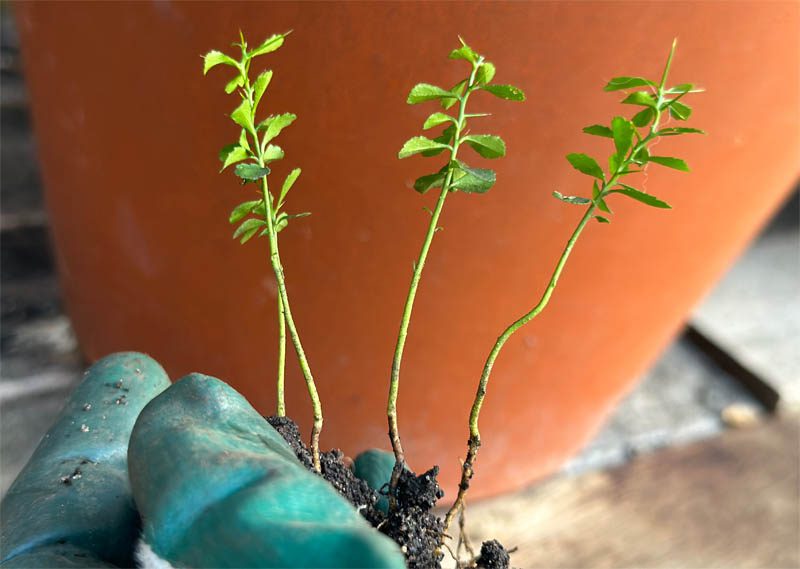
Yes, it is possible to grow finger lime from seed. Finger limes are self-pollinating, and can produce fruit and seeds without the need for cross-pollination.
Growing from seed is generally not recommended as they won’t always be true to type and take up to 15 years to mature. I just discovered several 5 cm (2 inch) finger lime seedlings below my largest finger lime. Seeds do not breed true, so you won’t know what you’re getting until they bear fruit.
Pests and diseases
Finger limes can be affected by melanose or citrus canker, a fungal disease caused by Diaporthe citri. The fruit, leaves and twigs are affected with small, black, raised lesions often surrounded by a yellow halo. Affected plants have premature leaf drop, fruit drop and reduced yields. Use fungicides that contain copper or strobilurin to protect healthy plant tissues and prevent the spread of the disease. Always apply fungicides according to the label instructions and at the recommended intervals. Always follow local regulations and guidelines when using fungicides.
Nutritional information
1 fruit (10 grams) contains:
- Calories: 5
- Carbohydrates: 1 gram
- Fibre: 0.5 grams
- Protein: 0.1 grams
- Fat: 0.1 grams
- Vitamin C: 4.5 milligrams (approximately 7% of the recommended daily intake)
- Folate: 3.5 micrograms (approximately 1% of the recommended daily intake)
- Potassium: 10 milligrams (less than 1% of the recommended daily intake)
- The pearls (or citric caviar) consist of malic acid, citric acid, lactic acid and glycolic acid and contain three times the level of vitamin C as mandarin. Vitamin C is an essential micronutrient that plays an important role in immune function by supporting the cellular functions of both the innate and adaptive immune systems.
Finger limes are a good source of antioxidants, which can help protect against cell damage from free radicals. Other nutrients are believed to include folate, potassium and Vitamin E.
Uses
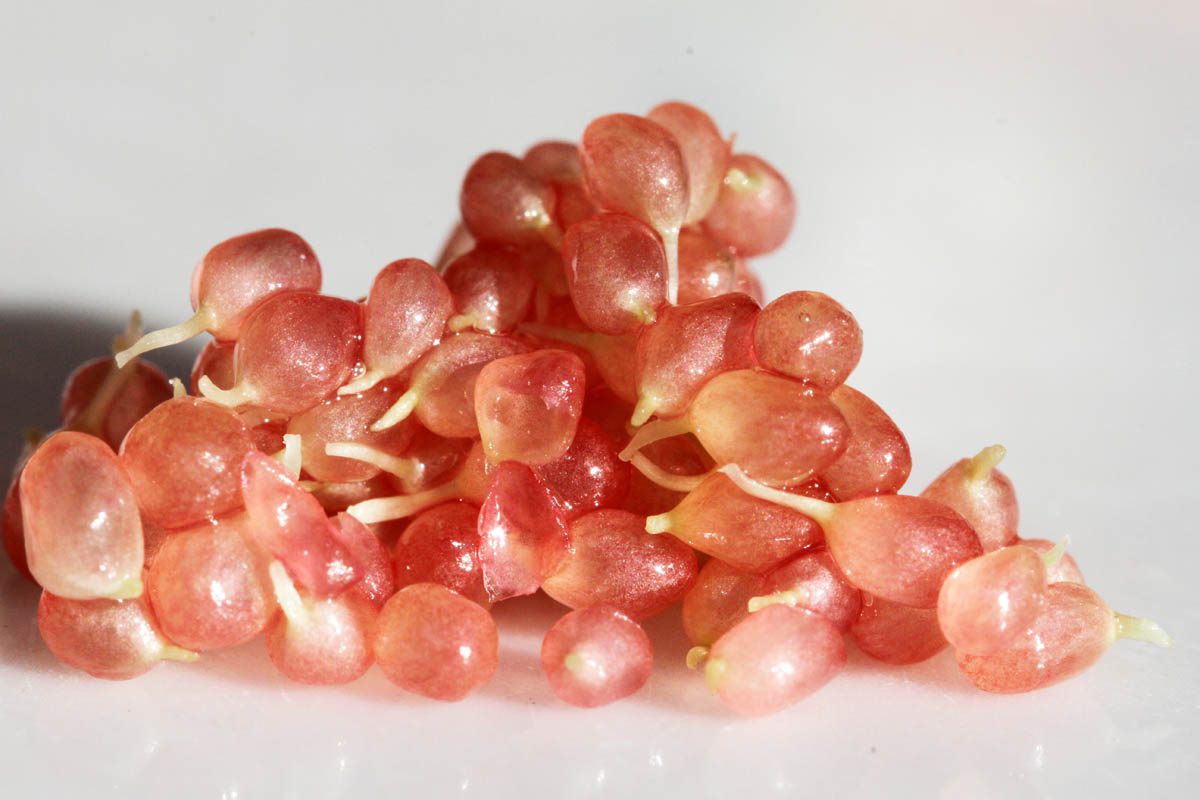
Australian finger limes have a unique flavour and texture that make them a versatile ingredient for a variety of dishes. Unlike other varieties of citrus, you do not peel finger lime, instead, cut it in half and squeeze out the pearls. Both the skin and pearls are edible, however, unlike other citrus varieties, the skin is not generally eaten. Finger limes can be eaten raw or cooked. Simply pick one off the tree, cut it in half and enjoy the tangy, mouth-popping taste of the caviar.
- Drinks: Gin and tonic, vodka and soda, margarita, martini and mojitos
- Baking: Finger lime juice caviar and zest can add a subtle citrus flavour to cakes and muffins
- Dressings and marinades: Finger lime caviar can be used to add a unique twist on classic salad dressings, aoili and marinades
- Preserves: Marmalades, jams and chutneys
- Desserts: Finger limes can be used in place of lemon or lime for cheesecake, ice cream, sorbets and tarts
- Seafood: Finger limes pair well with tacos, oysters, ceviche, sushi and grilled fish
- Salsa: Finger lime caviar can be mixed with tomato, onion, and chilli peppers to create a zesty salsa
Pairings:
Finger lime pairs well with avocado, chicken, coriander (cilantro), mint, basil, cumin, coriander and chilli.
Storage
Once picked, finger limes can be stored in a refrigerator or cool room (below 8°C) for 4-5 weeks. Finger limes freeze well and can be defrosted quickly under running cold water.
Are finger limes toxic to dogs and cats?
All citrus species contain essential oils limonene and linalool as well as psoralens which are toxic to pets in large quantities. Due to the tart taste of finger limes, most cats and dogs will not consume enough to pose a significant risk.
Recipes
Here’s a selection of recipe ideas for finger lime. As a rule, you can substitute any recipe that calls for lemon or lime with finger lime.
To extract the caviar, slice the finger lime in half, it place between your thumb and index finger and gently squeeze out the pearls. I prefer to squeeze the caviar onto a plate as finger limes can be seedy. You can then remove the seeds with the tip of a sharp knife before adding them to food or drink.
Finger lime caviar tacos |
Ingredients:
Instructions:
|
Finger lime and avocado toast |
Ingredients:
Instructions:
|
Finger lime vinaigrette |
Ingredients:
Instructions:
Notes: Goes well with chicken and seafood. |
Finger lime cheesecake |
Ingredients:
Instructions:
|
Finger lime guacamole |
Ingredients:
Instructions:
|
Finger lime sorbet |
Ingredients:
Instructions:
|
Finger lime salsa |
Ingredients:
Instructions:
|
Finger lime oysters |
Ingredients:
Instructions:
|
Finger lime gin and tonic |
Ingredients:
Instructions:
Notes: This recipe is for one person. I recommend a plain dry gin, not one with flavour, so you can enjoy the taste of the finger lime. You can use this for vodka and soda too, with the same spirit and mixer ratios. |
Finger lime margarita |
Ingredients:
Instructions:
|
Julia is a writer and landscape consultant from Wollongong with a love of horticulture. She had been an avid gardener for over 30 years, collects rare variegated plants and is a home orchardist. Julia is passionate about learning and sharing her knowledge of plant propagation and plant toxicology. Whether it’s giving advice on landscape projects or sharing tips on growing, Julia enjoys helping people make their gardens flourish.
